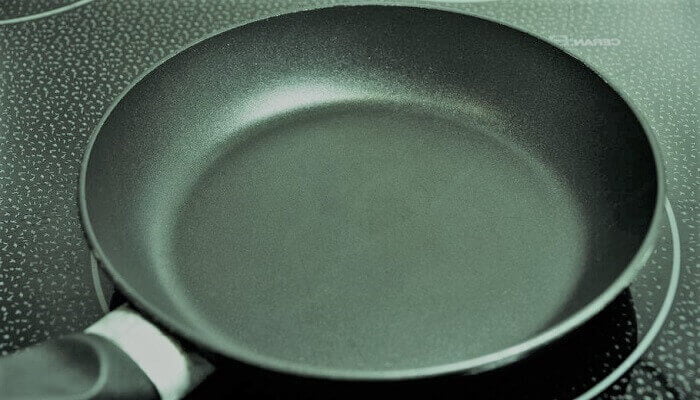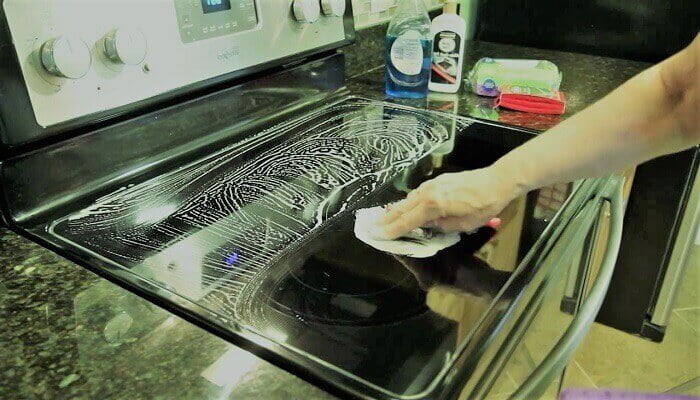How to Protect Glass Top Stove From Cast Iron (Skillet/Pan)?
Note: This article may contain affiliate links, which means if you make a purchase following our links won’t cost you extra, but we may earn a commission. Learn more
If you have any cooking experience at home, you may have a glass top stove or cookpot at this time, or it should be. It’s a time of motion. No one wants to take the risk of cooking with the extra hassle. Now the glass top stove is a modern solution to hassle-free cooking. So, its appeal is increasing day by day.
Although the glass and ceramic top stove are modern, glossy, and appealing, it needs to be used with extra care. You can’t use it roughly, it can break or iron pans or skillets can scratch its surface. So, if you carelessly choose glass top stoves, ranges, and the right appliance/ pan for cooking, it will be a risky decision for you.
Most modern homes are now equipped with electric and gas stovetops. Because they understand the importance of your time, you have the power to control the heat level suitable for your home cooking. However, glass top stoves limit your ability to cook with certain tools.
Cast iron skillets have been around for generations and have recently become more popular. However, some of them still couldn’t overcome all their limitations, and couldn’t be completely glass-top friendly.
Why Shouldn’t Use Cast Iron on Glass Top Stoves?
There are many reasons why you may have trouble using a cast-iron skillet or pan on a glass top stove, or you may not be able to use it. It’s good to know these as a precaution.
Weight
Cast iron pans or skillets themselves are much heavier, compared to aluminum or stainless steel, and glass is much lighter. Also when food and water are added to it, the weight increases further, which the light glass top can’t carry occasionally, breaks, or is in danger of breaking. Modern glass tops, however, are relatively stiff, and most of these glass cooktops can handle the weight of a normal daily cast iron cookware.
Flat Bottom
For glass and ceramic stoves, the pan or skillet needs to be flattened to distribute heat. Cast iron pans usually don’t have a flat bottom. Some will get a circular ridge around the outside edge, which will not match the proper glass top. In general, your pans aren’t flat. Some will get relative flats, but they’re not perfectly flat. These may not take in the proper heat and may create hot spots at the bottom of the pan.

Size
Many cast iron pots are much larger than your glass-top stove burner. If the pot is larger than the adjustment size on the stove, the pan will not be able to distribute heat evenly across its surface. This will reduce the heat transfer capacity or cooking speed of the stove relatively and will reduce the holding capacity of the stove and can damage the cooktop surface.
Finish
Cast iron has a rough finish, which easily scratches the surface of the glass cooktop. Cast iron coated in porcelain enamel is an alternative to a type of glass top. To avoid scratches, the finish should be smooth and the cast iron should be completely covered. When you use the enameled pan in a very high-temperature setting for a long time, the pan will retain heat which may cause damage to the glass top later on.
Related: Can Tefal Pans Be Used On A Gas Stove?
How to protect a glass top stove from cast iron?
From the above discussion, we have concluded that the touch surface of the glass top stove is very sensitive. It is best not to use heavy pans or skillets here. But our reality is that we have to use it! Now, how to use glass top or how to protect glass top stove from cast iron, can be discussed.
1. Wash Before Cooking
Cast iron pans store more cooking oil and small deposits of cooking than any other type of cookware. This is when you heat the oil in a cast-iron pan and food deposits tend to carbonize by leaving stains and smoke on the top surface of the glass. The effect of this is that it leaves a black stain on top of the glass top stove, which can sometimes be difficult to remove from the glass top. This is detrimental to your glossy glass stove.
You should wash and dry the skillet or pan thoroughly before you start cooking in your cast iron cookware, and keep the glass top clean after cooking.
Read: Find the Best Cleaner for Glass Stove Tops
2. Heat Diffusers
This is an excellent option. Heat diffusers are a great way to protect your glass top stove from your deflating iron. The diffusers act as connectors between your pan and the glass top stove. Heat radiators are designed to be flat and smooth but cast iron is rough and uneven by nature. Here diffusers act as connectors to help get all the heat from the stove to the pan and protect your glass top stoves from scratches.
3. Don’t Drop or Slide the Cookware on the Stove
Although this is accidental, it often happens. A little caution can be the key to protecting your glass top stove from cast iron cookware.
Cast iron cookware is heavy and rough and can cause accidents when connecting to a sensitive glass top. Whenever you remove pots or pans before or after cooking, make sure you lift them carefully and put them down carefully.
4. Heat the Cookware for a Long Time
Some glass cooktops take a little extra time to heat up, such as an electric stove. In addition, cast iron cookware may take longer to heat up normally. You have to be patient and keep an eye on the stove.
Cooking should begin with low heat, then gradually increase the heat to medium or medium-high, and gradually adjust the pan to the stove surface, otherwise.
5. Clean Your Glass Top Stove Regularly
There may be some leftover food or water scattered after cooking or any raw food that may get stuck with the equipment as a result of scraping and scratching against the glass surface, which can cause permanent damage to the glass top of your stove.
Not just stains, burnt food, black residue, and all sorts of splashes and spills from your pot can also get the smell of your glass top stove. So keeping the parts clean and the glass top of your stove will reduce the chances of damage to the stove.
6. Wash Your Cast Iron Pan
Another way to safely use an iron skillet or pan on your glass top is to keep it clean. Washing it every time you cook doesn’t mean that it is well-cleaned, you have to rub it well inside and out. A metal scrubber, soap, and hot water usually do a good job at this.
7. Use Cast Iron Pans That Match Your Stove
Each glass top stove has a set weight capacity and shouldn’t be carried more than that. When you use a measuring tape you can see how wide your main burner is. Check the diameter of your cast iron cookware to see if it fits snugly on your stove, or not. The general rule of thumb is not to use pots or pans that are larger than 2.5 centimeters or the width of the stove. For example, no pan or skillet 30 cm wide can be placed on the glass top of a 25 cm wide burner.
How to Clean a Glass Top Stove?
From the above discussion, it is clear that one of the ways to keep a glass top stove perfect is to clean it regularly.
Like any other glass surface, the most minimal spill, splatter, or smear when will stand out on a glass top stove, making it look dingy. If you do not immediately remove any dry scattering food, the next time you cook it, burned spills on the surface will make for a stubborn bit of caramelized mess, which may seem impossible to remove.
Almost everyone who uses a glass top stove knows that it’s very easy to clean, even many who don’t use it. Interestingly, very few people do this work, and most of those who do it do it with less care.

Stains can easily fall on the glass even after occasional wiping. It’s better not to use soap. Once the stove has cooled after use, sprinkle the surface generously with vinegar to clean stained glass stovetops. Then spray water and generously sprinkle baking soda on the water. Then take some hot water, and wipe with a clean towel to make sure the liquid is drained.
Place on a towel on the stove over baking soda and vinegar for ten to fifteen minutes. Then remove the towel and clean the baking soda and vinegar with a microfiber cloth. Use this microfiber cloth to remove any stains later on.
If your scars last long, if they don’t want to erase, you can use a handheld razor blade. However, before trying this method, one must read the manufacturer’s care instructions. If they warn against using razor blades, don’t do it. Scrape lightly on the residue stubbornly using uniform pressure on the blade in this method. But never use angles, it can scratch the glass-top surface.
Conclusion
Hope you understand from this discussion how to protect the glass top stove from cast iron and increase its durability by cleaning it regularly. Glass top stoves are great for cooking stoves. There are only a few things to consider when placing the iron on a glass stove. However, if you take all the above precautions and cook with extra care by carefully following the manufacturer’s instructions for this, you will be able to overcome these problems.
Glass top stoves are everyone’s favorite stoves for cooking at this modern pace. If you maintain them properly, you can get maximum service from them, which no other stove can afford.
To see our latest posts Click Here